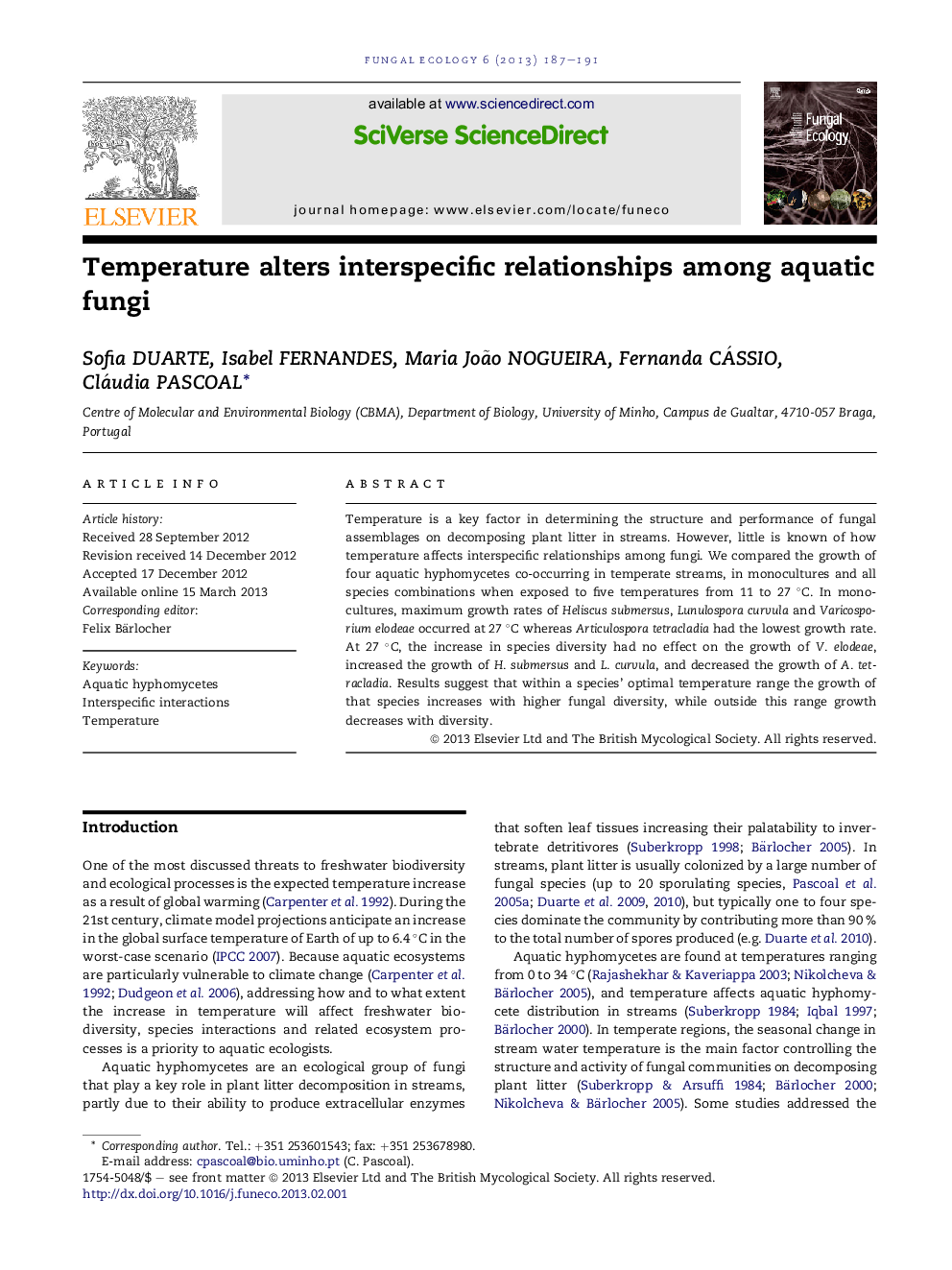| Article ID | Journal | Published Year | Pages | File Type |
|---|---|---|---|---|
| 2053629 | Fungal Ecology | 2013 | 5 Pages |
Temperature is a key factor in determining the structure and performance of fungal assemblages on decomposing plant litter in streams. However, little is known of how temperature affects interspecific relationships among fungi. We compared the growth of four aquatic hyphomycetes co-occurring in temperate streams, in monocultures and all species combinations when exposed to five temperatures from 11 to 27 °C. In monocultures, maximum growth rates of Heliscus submersus, Lunulospora curvula and Varicosporium elodeae occurred at 27 °C whereas Articulospora tetracladia had the lowest growth rate. At 27 °C, the increase in species diversity had no effect on the growth of V. elodeae, increased the growth of H. submersus and L. curvula, and decreased the growth of A. tetracladia. Results suggest that within a species' optimal temperature range the growth of that species increases with higher fungal diversity, while outside this range growth decreases with diversity.
► Little is known on how temperature affects relationships among fungi in streams. ► We compared fungal growth in monoculture and species combinations at five temperatures. ► Within its optimal temperature range, fungal growth increased with diversity. ► Far from their optimal temperatures, fungi became less competitive within assemblages.
